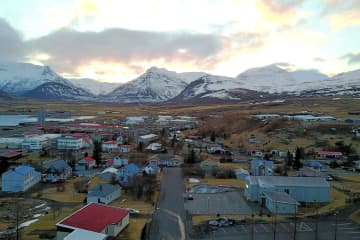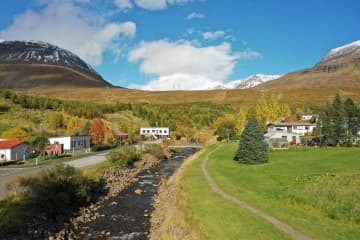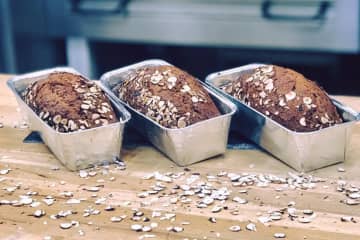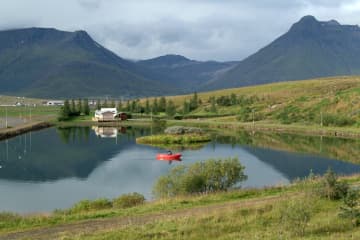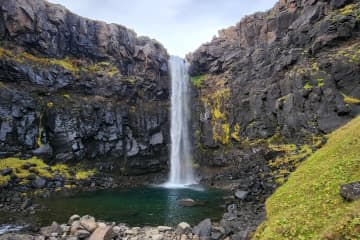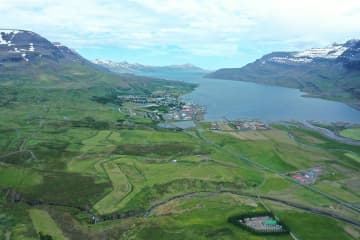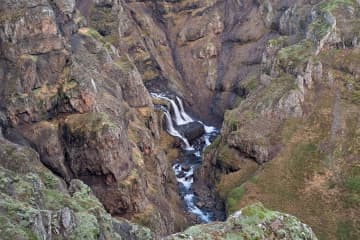Barkurinn - The Barque












At around 30 km in length, Reyðarfjörður is the longest of the East Icelandic fjords, and is almost 6 km wide. From it´s mouth, the fjord initially lies towards the northwest, then turnes west so as to shelter it´s inner areas from ocean swells. In many places below the shore there are aalso sharp drop-offs which make harbour conditions especially favourable.
The area where the barque (barkurinn) is located is named Bakkagerðiseyri (eyri = gravel flats deposited by the stream running from the slopes above). The group of houses first built here gradually grew into the village of Búðareyri, through nowadays this village is usually just named after the fjord. Two Norwegian brothers, Otto and Fredrik Wathne, moved to Iceland near the end of the 19th century and built up trading and fishing operations which contributed to the growth of the village.
The sunken Barque
In 1884, the Wathne brothers had part of a barque sunk below Bakkagerðiseyri so that a wharf could be fastened to it which has ever since been known as Barkurinn. The Wathne´s soon added a warehouse, salting shed and even a store and residence on the low gravelly area, continuing business here until nearly 1905. However, nothing remains of all this apart from Barkurinn, and even it has been restored. The original barque can still be seen below the wharf when the sea is calm at low tide.
By 1907, a road was opened over Fagridalur pass, and Barkurinn became one of the main shipping points for imports and exports from Fljótsdalshérað and Reyðarfjörður. For many years, a regional cooperative operated a considerable business at Reyðarfjörður, including at Bakkagerðiseyri. Activities were increased by the foreign occupation during World War II, with the military forces attempting to blast away the sunken barque, but giving up and rebuilding Barkurinn under the same name.
Restoration of Barkurinn
The condition Barkurinn was in before restoration began in 2010 - a once impressie structure that had seen better times. In 2010, the Fjarðabyggð Harbour Fund restored Barkurinn, re-building it partly above the barque, which can still be viewed on the sea floor below. The new wharf is solely meant for peasure - a site where residents and visitors can fish, read about the warf´s history and enjoy the scenery.
What is a Barque?
The large sailing ships called barques normally had three masts, which from the rear were the mizzenmast, mainmast and foremast. Historically, barques transported goods to and from Iceland, and once old and dilapidated were often considered handy as a base support for harbour structures. This involved sinking the barque to the bottom and fastening a wharf to it for the fishing industry and various other vessels.


